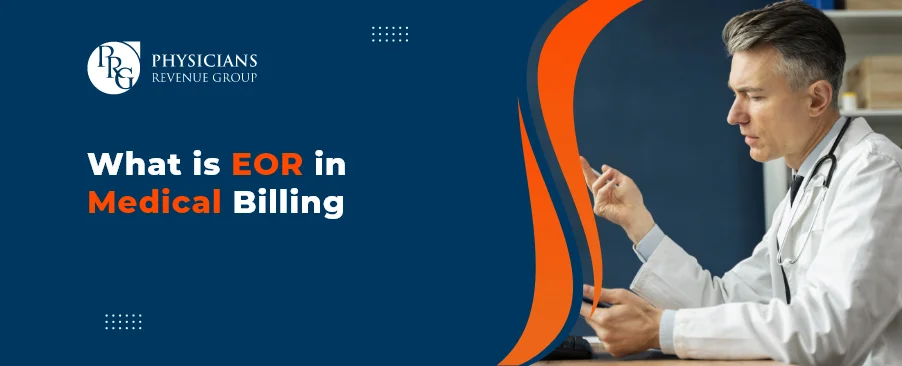
Email: info@prgmd.com | Call: +1 (630) 242-6474
Business hours: 9:00 to 5:00 | Monday to Friday
Email: info@prgmd.com | Call: +1 (630) 242-6474
Business hours: 9:00 to 5:00 | Monday to Friday

Table of Contents
ToggleHealthcare providers prefer to get reimbursements right in their first attempts. To ensure you get paid in the first instance – your practice must eliminate the repetitive errors, if any. It can be easier if the providers themselves or their staff can read ERA or EOB in medical billing. However, reading it isn’t enough; medical providers must also correctly interpret it. Further, it is essential to recognize that there always remains a chance percentage of getting claim denials. It is where third-party medical billing services companies can help you boost your practice revenue.
EOR is a vital tool for healthcare providers – helping providers understand medical billing. In medical terminology, the EOR means Explanation of Reimbursement. It is also known as EOB – Explanation of Benefits, or EOP – Explanation of Payment.
In medical billing, EOR is a document that insurance providers send out to patients and healthcare providers. EOR in medical billing outlines and elaborates how insurance companies process medical claims and how much they will reimburse for the provided services.
Moreover, the EOR document lists the payment that a patient handles and the reason for claim denials. It also helps healthcare providers understand the payment processes and how much patients owe.
An EOR usually includes the following information:
Patient Information – here, the EOR in medical billing includes patients’ name, insurance policy number, and address
Claim Details – the details include the date of service, the amount billed, and the type of medical service provided
Healthcare Provider Information includes the name, NPI (National Provider Identifier) number, and provider address.
Insurance Payment Details include the amount paid by the insurance, the reason for denials, if any, and the patient’s responsibility.
Here, the insurance company gets the medical claim and starts the adjudication process. The process here involves reviewing the claim to determine its accuracy and eligibility for reimbursement. The insurance provider verifies a patient’s coverage and checks up on the pre-existing conditions or the policy limitations. Furthermore, the process also determines if the medical services provided are medically necessary.
For the claim adjudication process, the insurance provider compares the codes submitted with their fee structures and internal reimbursement policies. They also evaluate claims for any potential errors, duplication of services, or billing discrepancies. The entire process is time-consuming, and the claims will go through a few rounds of review before finalizing any decision.
After claim adjudication, the insurance providers compile an EOB –an explanation of benefits. EOB is a comprehensive statement outlining the insurance provider’s decision for the particular medical claim. The statement details the following:
Moreover, the EOB is sent to the patient and healthcare providers. It is an important document to understand the payment process to identify any discrepancies or issues. Moreover, EOB also helps keep track of the amount that patients owe.
The last step for EOR in medical billing is payment collection and patient billing. After getting the EOB – the healthcare practitioner prepares an invoice for patients. This invoice details the remaining balance based on the insurance providers’ payments and patient responsibility. The invoice is usually sent alongside a copy of the EOB.
Next, in the EOR process, patients pay the remaining balance to healthcare practitioners. Further, it can be done through various payment modes, including cash, debit/credit cards, or the online portals of insurance companies. Finally, it is important to note that insurance companies must communicate the payment options and terms to patients, ensuring a transparent billing process.
EOR has a vital role in the medical billing process. It serves as a communication tool for healthcare providers and insurance companies. The EOR process ensures accuracy and transparency in the payment process.
Below are some of the key reasons which explain why EOR is vital in medical billing:
Share:
Categories
Recently Added

What is an ABN in medical billing?

What does a Clearinghouse do During Claims Submission?

What is VOB in Medical Billing?
We Would Love to Assist You!
We treat your data confidentially and don’t share any information with a third party.